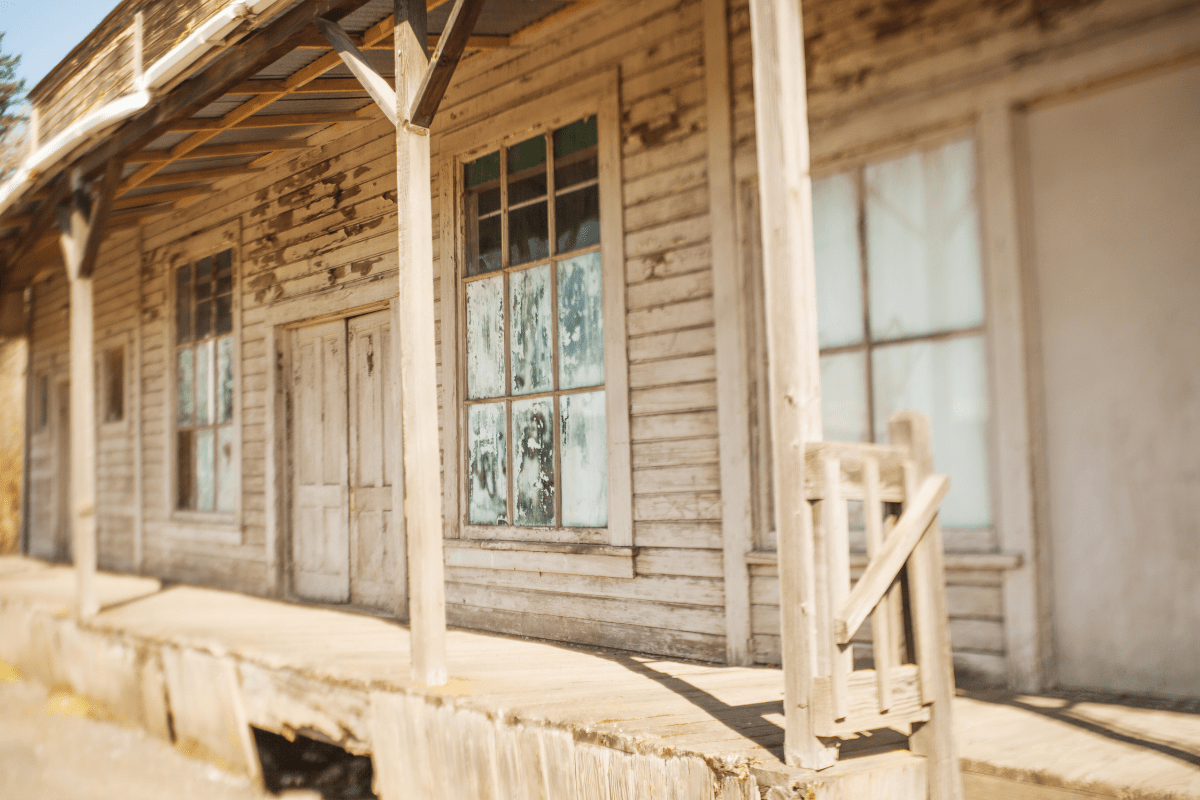Texas waterways span an absolutely ridiculous 26 million acres of paddling possibilities, from crystal-clear springs to muddy bayous where prehistoric-looking creatures lurk beneath cypress roots. Whether you're seeking Instagram-worthy sunset paddles through downtown Austin or planning to disappear into the wilderness for days, this massive state delivers every type of kayaking adventure imaginable… plus a few you probably haven't imagined yet.
Why Texas kayaking hits different
The sheer diversity of Texas paddling spots means you can chase dolphins in hypersaline lagoons on Saturday and navigate Class III rapids through desert canyons on Sunday. With over 3,700 named streams and rivers plus 200+ major lakes, you'd need several lifetimes to explore every waterway in the Lone Star State.
The numbers tell an interesting story too. Nearly 20 million Americans went kayaking in 2023, representing an 87% increase since 2010. Apparently, we've all collectively decided that sitting in small plastic boats while occasionally getting splashed in the face counts as a good time. And honestly? We're not wrong.
Spring and fall offer the sweet spot for Texas paddling, when temperatures hover in that magical zone where you're neither freezing nor melting into your kayak seat. Summer paddling requires the dedication of a morning person (5 AM launches, anyone?), while winter rewards the brave with empty waterways and spectacular waterfowl viewing. Just know that if you're paddling in August, you'll understand why Texans invented the phrase "hotter than a stolen tamale."
Before you paddle: The safety stuff nobody reads but everyone needs
Here's your wake-up call: In 2024, Texas reported 169 boating incidents, and 22 of the 24 fatalities involved paddlers who weren't wearing life jackets. I know, I know, life jackets are uncomfortable and ruin your tan lines. But they're significantly more comfortable than drowning.
Texas law requires life jackets for kids under 13, but let's be real… adults need them too. The state offers free Kayaking 101 classes through partnerships with the Coast Guard and American Canoe Association, because apparently we need professionals to teach us not to paddle backwards into boat traffic.
Flash flooding poses the biggest risk on Texas rivers, transforming peaceful streams into raging torrents faster than you can say "maybe we should have checked the weather." Cell service remains spotty to non-existent in remote areas, so that Instagram story might have to wait. And yes, there are alligators in East Texas waters. They're usually more scared of you than you are of them, but "usually" is doing a lot of heavy lifting in that sentence.
Coastal paddling: Where the Gulf meets your kayak
Texas offers 600 miles of Gulf Coast shoreline with everything from protected bays to barrier islands. The coastal waters range from the hypersaline Laguna Madre to freshwater-influenced estuaries, creating diverse ecosystems that support incredible wildlife viewing. Whether you're a beginner seeking calm waters or an experienced paddler ready for open-water crossings, the Texas coast delivers year-round paddling opportunities.
Padre Island National Seashore stands alone
Padre Island offers something genuinely special: access to Laguna Madre, one of only six hypersaline lagoons on the entire planet. The shallow waters average just 4.5 feet deep, making it perfect for beginners who appreciate being able to stand up when things go sideways.
Bird Island Basin serves as your launching pad, complete with 114 trailer parking spaces and on-site kayak rentals from Worldwinds Windsurfing. The $5 daily boat launch fee and $8 camping fee won't break the bank, leaving more money for the inevitable souvenir shop damage.
Wildlife watching here borders on the absurd. You might spot any of 380 bird species or even one of five endangered sea turtle species that call these waters home. The 15-mile paddle to Yarborough Pass challenges intermediate paddlers, though "challenge" mostly means "remember to bring enough water and sunscreen."
Matagorda Bay: The coastal wilderness experience
Matagorda Bay offers 35 miles of shoreline accessible only by boat, which automatically filters out the crowds. The 40-mile interconnected Port O'Connor paddling trail system provides enough exploration for multiple trips, assuming you don't get distracted by dolphins in Saluria Bay.
LCRA Matagorda Bay Nature Park runs guided Saturday excursions for $50 with kayak rental or $25 if you bring your own boat. Their guides know where the dolphins hang out and which routes avoid the worst of the wind, knowledge that's worth its weight in waterproof sunscreen.
Galveston for the multitaskers
Galveston Island State Park manages to pack three distinct trails into its boundaries, ranging from 2.6 to 4.8 miles. The park protects over 200 acres of seagrass habitat, the largest such preserve on the upper Texas coast. During spring and fall migrations, over 500 bird species pass through, turning your paddle into an accidental birding expedition.
River running: From desert canyons to spring-fed clarity
Texas rivers offer the state's most diverse paddling experiences, from technical whitewater challenges to leisurely float trips perfect for families. The variety spans desert canyon adventures in West Texas to crystal-clear spring-fed streams in the Hill Country. River levels fluctuate dramatically with rainfall, making some destinations seasonal while others maintain consistent flows year-round thanks to dam releases or spring sources.
Devils River earns its reputation
The Devils River remains Texas's most pristine waterway, with water quality measuring 10 times cleaner than EPA drinking water standards. This isn't your casual Sunday paddle spot, though. The remote location and Class I-III rapids demand experience and preparation.
Only 24 paddlers per day can access the river with $10 permits, and you'll need to arrange shuttle service starting at $480 through Amistad Expeditions. Kayak rentals run $65 daily, but honestly, if you're tackling the Devils River, you probably own your own boat and have strong opinions about paddle length.
Big Bend's Rio Grande delivers drama
Five major canyons along the Rio Grande create a paddling playground where limestone cliffs soar up to 1,500 feet overhead. Santa Elena Canyon offers Class II-III rapids that bump up to Class IV at high water, while Boquillas Canyon provides a gentler Class I-II float suitable for families who define "adventure" more conservatively.
Current drought conditions have created extremely low flows from 2023 through 2025, limiting many sections to canoe-only travel. Big Bend River Tours and Far Flung Outdoor Center offer everything from half-day trips to 10-day expeditions through the Lower Canyons, where you'll see more roadrunners than roads.
San Marcos River: The goldilocks option
The San Marcos River maintains a constant 72°F temperature year-round thanks to 200+ springs feeding Spring Lake. This creates perfect conditions for beginners and families, with gentle Class I waters that won't flip your kayak unless you're really trying.
Seven endangered species call these waters home, including the Texas Blind Salamander, which sounds like something from a fantasy novel but actually exists. Mission Kayak rents singles for $35 per hour, and their LED-lit clear kayak night tours offer a genuinely magical experience that makes you forget you're paddling through a college town.
Guadalupe River brings the excitement
Below Canyon Dam, the Guadalupe River delivers Texas's premier whitewater experience with consistent flows between 450-750 CFS. The 24-mile stretch to New Braunfels features legitimate Class II-III rapids including Hueco Falls and "The Chute," a limestone channel that sounds scarier than it actually is… mostly.
Cold water releases from the dam keep temperatures in the 60-70°F range year-round, which feels amazing in July but requires mental preparation in January. Winter paddlers get rewarded with rainbow trout fishing opportunities, because apparently some fish prefer their water refrigerator-cold.
Lake life: Big water, bigger possibilities
Texas lakes range from natural wonders draped in ancient cypress to massive reservoirs carved into Hill Country limestone. These diverse environments offer everything from protected coves perfect for beginners to open water crossings that challenge experienced paddlers. The state's lake systems provide reliable paddling year-round, though boat traffic on popular lakes requires strategic timing to avoid the weekend warrior flotillas.
Caddo Lake feels prehistoric (because it basically is)
East Texas's Caddo Lake sprawls across 26,800 acres of the world's largest cypress forest, where 2,000-year-old trees create cathedral-like passages draped in Spanish moss. As Texas's only naturally-formed lake, it has that authentic "lost world" vibe that human-made reservoirs can't replicate.
More than 250 bird species inhabit the area, along with a healthy alligator population that makes guided tours advisable for first-timers. State park canoe rentals cost $20-30 daily, and the Hell's Half Acre Paddling Trail provides a 2.5-mile route that ends conveniently at riverside dining, because paddling works up an appetite.
Top wildlife spotting opportunities:
- Early morning for deer
- Sunset for bird rookeries
- Spring for migrating songbirds
- Fall for duck species
- Anytime for turtles sunbathing
Inks Lake won't let you down
Inks Lake maintains constant water levels regardless of drought conditions, earning its reputation as the most reliable paddling destination in Central Texas. The pink granite formations surrounding the lake date back 1.3 billion years, providing a geological history lesson with your workout.
The Devil's Waterhole Paddling Trail leads to an iconic swimming hole and cliff-jumping spot where teenagers have been terrifying their parents for generations. The Stumpy Hollow Trail winds 3.4 miles through submerged forest that looks particularly otherworldly in morning fog. State park rentals start at $20 for the first hour, and yes, you'll want more than an hour.
Urban escapes: City paddling without the commute
Urban paddling trails prove you don't need to leave the city for quality time on the water. Texas cities have transformed their waterways into paddling destinations that rival natural areas, complete with wildlife viewing, scenic skylines, and surprisingly good water quality in some spots. These trails offer the perfect solution for quick after-work paddles or weekend adventures when driving to remote locations isn't an option.
Lady Bird Lake makes Austin weirder
Austin's Lady Bird Lake offers 11 motorboat-free miles through downtown, where you can paddle beneath bridges while dodging stand-up paddleboarders doing yoga poses. The lake hosts the world's largest urban bat colony, with 1.5 million Mexican free-tailed bats emerging nightly from March through October in a display that makes every sunset paddle memorable.
Multiple rental operators charge $20-25 hourly for single kayaks, with Texas Rowing Center and Rowing Dock providing the most comprehensive services. A current toxic algae alert from August 2025 requires avoiding water contact, though paddling remains safe if you resist the urge to practice your roll technique.
Buffalo Bayou surprises Houston skeptics
Houston's Buffalo Bayou Paddling Trail stretches 26 miles through the city, passing under eight bridges while offering surprisingly good wildlife viewing. Yes, there are occasional alligators. No, they're not usually a problem. Usually.
Buffalo Bayou Kayak Tours rents singles for $35-40 per two hours, and their guides know which sections avoid the worst of the urban runoff smell. The annual Buffalo Bayou Regatta in March draws 400+ participants for Texas's largest canoe and kayak race, proving that Houstonians will compete over literally anything.
Essential urban paddling gear:
- Dry bag for electronics
- Extra water despite short distances
- Polarized sunglasses for bridge glare
- Patience for weekend crowds
- Sense of humor about water quality
Trinity River challenges Dallas expectations
The Trinity River creates a 130-mile paddling trail through the Dallas-Fort Worth metroplex, though 19 dams require careful navigation. Six dams must be completely avoided unless you've always wanted to star in a viral video titled "Kayak Fail Compilation."
TC Paddlesports at Panther Island offers rentals starting at $20 for the first hour, and the Dallas Wave provides legitimate urban whitewater for advanced paddlers who thought they'd have to leave the city for rapids.
San Antonio's Mission Reach combines culture and kayaking
San Antonio's Mission Reach Paddling Trail connects four UNESCO World Heritage Sites along eight miles of restored river ecosystem. The trail includes 30+ engineered riffles and canoe chutes that add excitement without requiring actual whitewater skills.
One portage around Espada Dam is required, offering a chance to stretch your legs and pretend you're on a wilderness expedition instead of paddling through a major city. Mission Kayak rents boats for $35 hourly with extended summer hours for sunset paddling, when the missions look particularly photogenic.
Planning your Texas paddling adventure
Getting out on Texas waters requires some planning, but nothing too complicated. Costs vary wildly depending on your ambition level, and timing matters more than you might think. Understanding seasonal patterns, checking current conditions, and budgeting appropriately will make the difference between an epic adventure and a story that starts with "Well, that didn't go as planned."
Texas paddling costs vary from budget-friendly to "maybe I should have checked the price first." State park day-use fees typically run $4-7 per person, with boat launches adding $5-30. Urban kayak rentals hover around $20-25 hourly, while wilderness areas charge $65 daily. Guided tours cost $50-75 for half-day experiences, though multi-day expeditions can exceed $1,000 if you're feeling fancy.
The ongoing drought has severely impacted some destinations, particularly the Rio Grande, while spring-fed rivers like the San Marcos maintain consistent flows. Urban lakes increasingly experience toxic algae blooms from May through August, requiring careful monitoring of water quality alerts. Nobody wants to explain to their doctor that they got sick from licking their paddle.
The best approach? Start with easily accessible spots to build skills and confidence, then gradually work up to more remote adventures. Join local paddling clubs to find partners and learn about secret spots that don't appear in guidebooks. And always, always check water levels and weather forecasts, because Mother Nature doesn't care about your weekend plans.
Texas offers every conceivable type of kayaking experience across its vast waterways, from serene morning paddles to multi-day wilderness expeditions. The hardest part isn't finding somewhere to paddle… it's choosing which adventure to tackle first. Just remember to wear your life jacket, respect the wildlife (especially the toothy kind), and embrace the occasional mishap as part of the story you'll tell later. After all, the best paddling tales usually start with "So there we were, completely lost, when…"





